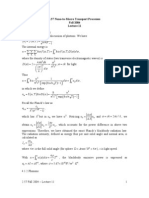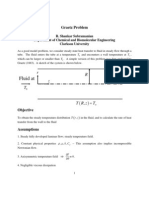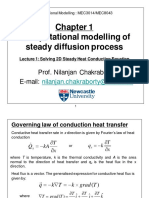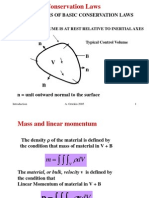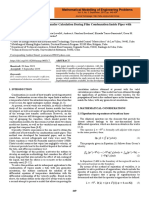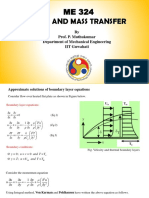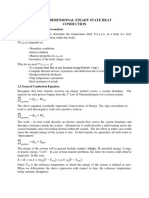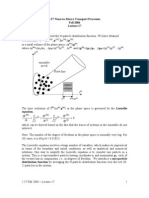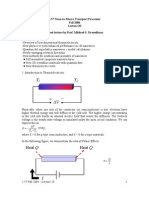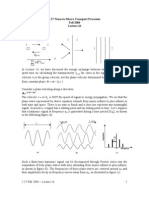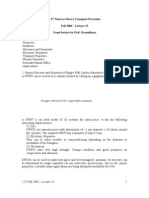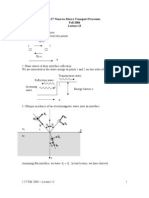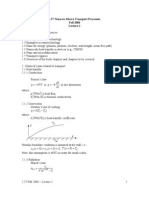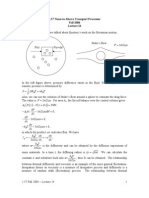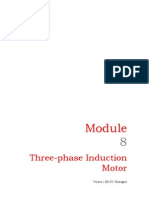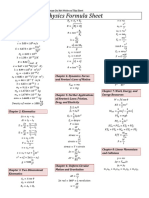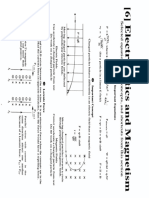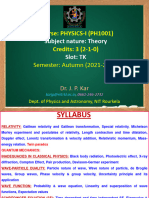0% found this document useful (0 votes)
273 views5 pagesQ FV V: 2.57 Nano-to-Macro Transport Processes Fall 2004
This document summarizes heat transport processes at the nano-to-macro scale. It discusses:
1) Deriving an expression for heat flux using the Boltzmann transport equation and considering phonon scattering.
2) Solving the equation subject to boundary conditions to determine temperature profiles, showing heat flux decreases with decreasing film thickness due to increased phonon scattering.
3) Extending the analysis to consider both specular and diffuse phonon scattering at boundaries, as well as scattering along the film thickness.
4) Defining dimensionless parameters to describe the temperature profile and determine it approaches an equilibrium profile as the mean free path increases relative to film thickness.
Uploaded by
captainhassCopyright
© Attribution Non-Commercial (BY-NC)
We take content rights seriously. If you suspect this is your content, claim it here.
Available Formats
Download as PDF, TXT or read online on Scribd
0% found this document useful (0 votes)
273 views5 pagesQ FV V: 2.57 Nano-to-Macro Transport Processes Fall 2004
This document summarizes heat transport processes at the nano-to-macro scale. It discusses:
1) Deriving an expression for heat flux using the Boltzmann transport equation and considering phonon scattering.
2) Solving the equation subject to boundary conditions to determine temperature profiles, showing heat flux decreases with decreasing film thickness due to increased phonon scattering.
3) Extending the analysis to consider both specular and diffuse phonon scattering at boundaries, as well as scattering along the film thickness.
4) Defining dimensionless parameters to describe the temperature profile and determine it approaches an equilibrium profile as the mean free path increases relative to film thickness.
Uploaded by
captainhassCopyright
© Attribution Non-Commercial (BY-NC)
We take content rights seriously. If you suspect this is your content, claim it here.
Available Formats
Download as PDF, TXT or read online on Scribd
/ 5




